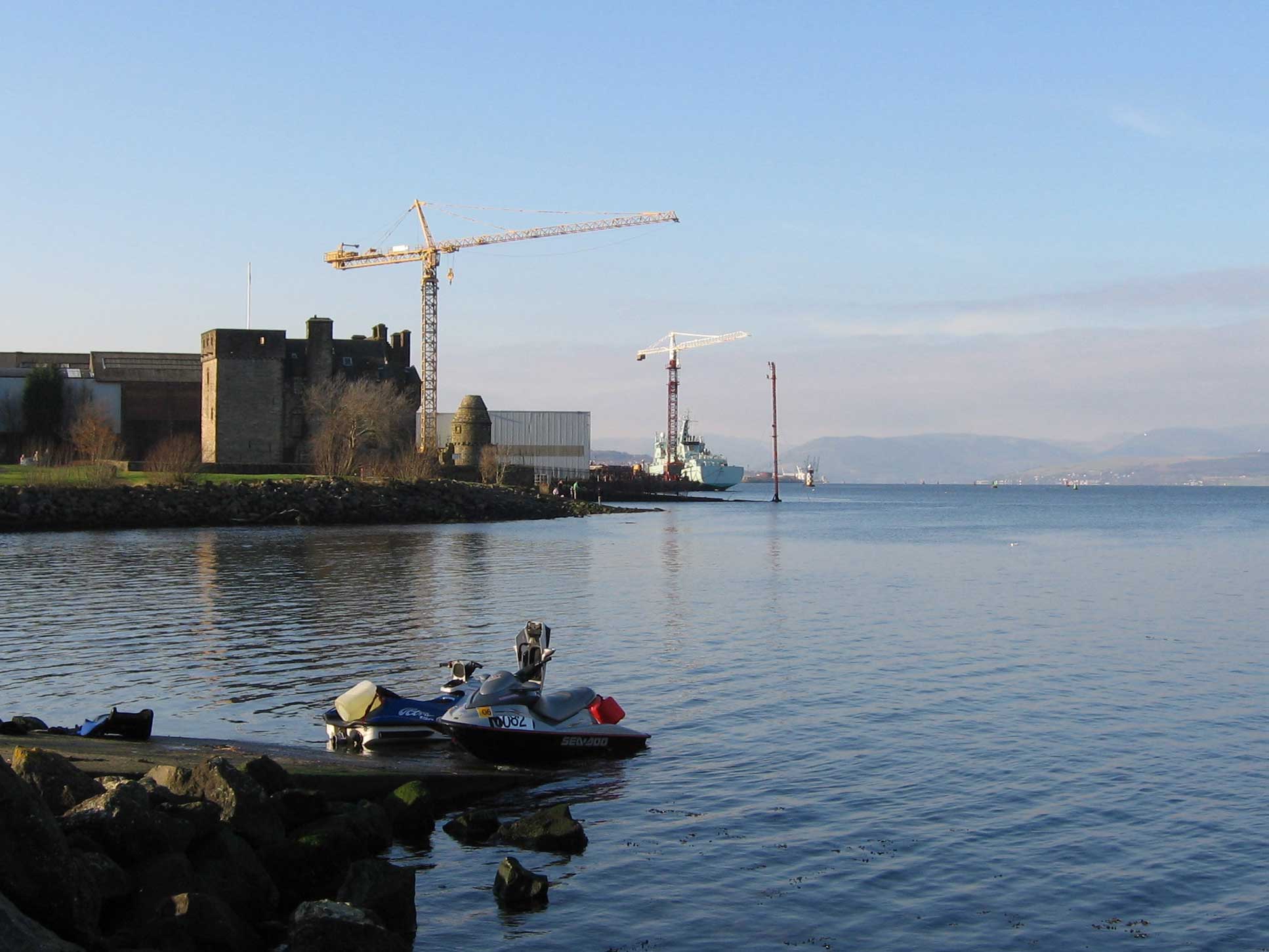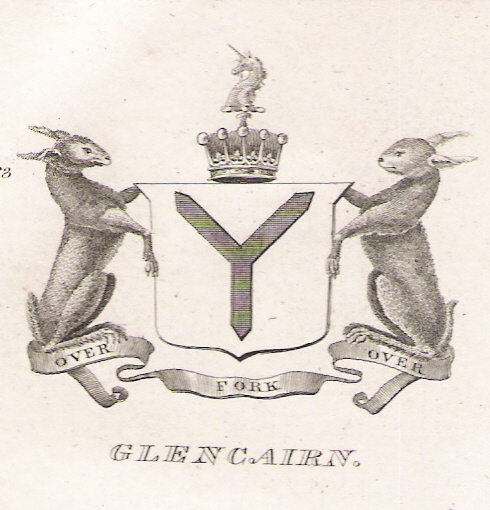|
Wallace Oak (Port Glasgow)
The Wallace Oak was a tree at Port Glasgow, Scotland. It is linked in legend to the Scottish independence leader William Wallace who is said to have been chained to the tree in 1304/05 after his capture by English forces. The tree was starting to decay by the 18th century and was treated with pitch. It also had chains added to strengthen its branches, which may be the origin of the Wallace myth. The tree fell during a storm in 1995 but some of its timber has been preserved. A proposal was made in 2019 to erect a monument to the tree. Connection with Wallace The tree stood near the present-day location of the Holy Family Roman Catholic Church on Parkhill Avenue in Port Glasgow. The tree is linked to a legend associated with Scottish independence leader William Wallace. Scottish historian David R. Ross stated in his 1998 work ''On the Trail of William Wallace'' that Wallace was captured by the English at Robroyston, near Glasgow and brought across the River Clyde by the ferr ... [...More Info...] [...Related Items...] OR: [Wikipedia] [Google] [Baidu] |
Port Glasgow
Port Glasgow ( gd, Port Ghlaschu, ) is the second-largest town in the Inverclyde council area of Scotland. The population according to the 1991 census for Port Glasgow was 19,426 persons and in the 2001 census was 16,617 persons. The most recent census in 2011 states that the population has declined to 15,414. It is located immediately to the east of Greenock and was previously a burgh in the county of Renfrewshire. Originally a fishing hamlet named Newark, Port Glasgow came about as a result of large ships being unable to navigate the shallow and meandering River Clyde to the centre of the city of Glasgow. As a result, it was formed as a remote port for Glasgow in 1668, and became known as 'New Port Glasgow', which was shortened to 'Port Glasgow' in 1775. Port Glasgow was home to dry docks and shipbuilding beginning in 1780. The town grew from the central area of the present town and thus many of the town's historic buildings and people are found here. Port Glasgow expanded up ... [...More Info...] [...Related Items...] OR: [Wikipedia] [Google] [Baidu] |
William Wallace
Sir William Wallace ( gd, Uilleam Uallas, ; Norman French: ; 23 August 1305) was a Scottish knight who became one of the main leaders during the First War of Scottish Independence. Along with Andrew Moray, Wallace defeated an English army at the Battle of Stirling Bridge in September 1297. He was appointed Guardian of Scotland and served until his defeat at the Battle of Falkirk in July 1298. In August 1305, Wallace was captured in Robroyston, near Glasgow, and handed over to King Edward I of England, who had him hanged, drawn and quartered for high treason and crimes against English civilians. Since his death, Wallace has obtained an iconic status far beyond his homeland. He is the protagonist of Blind Harry's 15th-century epic poem '' The Wallace'' and the subject of literary works by Jane Porter and Sir Walter Scott, and of the Academy Award-winning film '' Braveheart''. Background William Wallace was a member of the lesser nobility, but little is definitely known of ... [...More Info...] [...Related Items...] OR: [Wikipedia] [Google] [Baidu] |
David R
David (; , "beloved one") (traditional spelling), , ''Dāwūd''; grc-koi, Δαυΐδ, Dauíd; la, Davidus, David; gez , ዳዊት, ''Dawit''; xcl, Դաւիթ, ''Dawitʿ''; cu, Давíдъ, ''Davidŭ''; possibly meaning "beloved one". was, according to the Hebrew Bible, the third king of the United Kingdom of Israel. In the Books of Samuel, he is described as a young shepherd and harpist who gains fame by slaying Goliath, a champion of the Philistines, in southern Canaan. David becomes a favourite of Saul, the first king of Israel; he also forges a notably close friendship with Jonathan, a son of Saul. However, under the paranoia that David is seeking to usurp the throne, Saul attempts to kill David, forcing the latter to go into hiding and effectively operate as a fugitive for several years. After Saul and Jonathan are both killed in battle against the Philistines, a 30-year-old David is anointed king over all of Israel and Judah. Following his rise to power, David ... [...More Info...] [...Related Items...] OR: [Wikipedia] [Google] [Baidu] |
Robroyston
Robroyston ( gd, Baile Raibeart Ruadh) is a suburb of Glasgow, Scotland, located around 3 miles (5 km) north-east of the city centre. To the north, it directly adjoins Auchinairn (part of Bishopbriggs) in the neighbouring East Dunbartonshire local authority area. The Glasgow neighbourhoods of Balornock and Barmulloch lie to the west, but these are largely separated from Robroyston by a nature reserve. Land to the east towards North Lanarkshire is open countryside, which has made the area a popular location for housing developments. Land to the south is also unoccupied, but is on the opposite side of the M80 motorway, Junction 2 of which directly serves the area. History William Wallace It was in Robroyston that the Scottish leader William Wallace was turned over to English soldiers in 1305. At the site of Wallace's capture there stands a monument — there have also been proposals put forward for a visitor's centre in the area, at the site of the monument. On the monu ... [...More Info...] [...Related Items...] OR: [Wikipedia] [Google] [Baidu] |
River Clyde
The River Clyde ( gd, Abhainn Chluaidh, , sco, Clyde Watter, or ) is a river that flows into the Firth of Clyde in Scotland. It is the ninth-longest river in the United Kingdom, and the third-longest in Scotland. It runs through the major city of Glasgow. Historically, it was important to the British Empire because of its role in shipbuilding and trade. To the Romans, it was , and in the early medieval Cumbric language, it was known as or . It was central to the Kingdom of Strathclyde (). Etymology The exact etymology of the river's name is unclear, though it is known that the name is ancient: It was called or by the Britons and by the Romans. It is therefore likely that the name comes from a Celtic language—most likely Old British. But there is more than one old Celtic word that the river's name could plausibly derive from. One possible root is the Common Brittonic , meaning 'loud' or 'loudly'. More likely, the river was named after a local Celtic goddess, '' Clōta ... [...More Info...] [...Related Items...] OR: [Wikipedia] [Google] [Baidu] |
Elderslie, Scotland
Elderslie ( gd, Ach na Feàrna) is a village in the council area and historic county of Renfrewshire in west central Scotland. It chiefly serves as a commuter village, situated midway between the towns of Paisley and Johnstone, and lies west of Glasgow city centre. Elderslie is most famous as the assumed birthplace of Scottish hero Sir William Wallace, a knight born around 1270 who served as a military leader in the Wars of Scottish Independence before being captured and executed. History The origin of the name of "Elderslie" is Old English for "field of Elder Trees". It is assumed that William Wallace was born and grew up in Elderslie. On the site of the ancient Elderslie Castle there stands a monument to commemorate his life, and a commemoration ceremony is held every August. Also on the site is the Wallace Yew, an ancient yew tree and the Wallace Oak stood nearby until 1856. Auchenbathie Tower a few miles to the south is a site associated with William Wallace in an action ... [...More Info...] [...Related Items...] OR: [Wikipedia] [Google] [Baidu] |
William Cunningham, 13th Earl Of Glencairn
Earl of Glencairn was a title in the Peerage of Scotland. It was created in 1488 for Alexander Cunningham, 1st Lord Kilmaurs (created 1450). The name was taken from the parish of Glencairn in Dumfriesshire so named for the Cairn Waters which run through it. On the death of the fifteenth earl in 1796, there existing no original Letters Patent of the creation nor a given remainder in the various confirmations in title of previous earls the title became dormant The earldom was claimed by Sir Adam Fergusson of Kilkerran, Bt., as heir of line of Alexander 10th, Earl of Glencairn and was opposed by Sir Walter Montgomery Cunningham of Corshill, Bt., as presumed heir male along with Lady Henriet Don, sister of the last earl, and wife of Sir Alexander Don of Newton Don, Roxburghshire. The House of Lords Committee of Privileges on 14 July 1797, chaired by the Lord Chancellor ( Lord Rosslyn), in deciding the claim of the first-named, took a view unfavourable to all the claimants, and adju ... [...More Info...] [...Related Items...] OR: [Wikipedia] [Google] [Baidu] |
Dendrochronology
Dendrochronology (or tree-ring dating) is the scientific method of dating tree rings (also called growth rings) to the exact year they were formed. As well as dating them, this can give data for dendroclimatology, the study of climate and atmospheric conditions during different periods in history from wood. Dendrochronology derives from Ancient Greek (), meaning "tree", (), meaning "time", and (), "the study of". Dendrochronology is useful for determining the precise age of samples, especially those that are too recent for radiocarbon dating, which always produces a range rather than an exact date. However, for a precise date of the death of the tree a full sample to the edge is needed, which most trimmed timber will not provide. It also gives data on the timing of events and rates of change in the environment (most prominently climate) and also in wood found in archaeology or works of art and architecture, such as old panel paintings. It is also used as a check in radiocar ... [...More Info...] [...Related Items...] OR: [Wikipedia] [Google] [Baidu] |
Individual Oak Trees
An individual is that which exists as a distinct entity. Individuality (or self-hood) is the state or quality of being an individual; particularly (in the case of humans) of being a person unique from other people and possessing one's own needs or goals, rights and responsibilities. The concept of an individual features in diverse fields, including biology, law, and philosophy. Etymology From the 15th century and earlier (and also today within the fields of statistics and metaphysics) ''individual'' meant " indivisible", typically describing any numerically singular thing, but sometimes meaning "a person". From the 17th century on, ''individual'' has indicated separateness, as in individualism. Law Although individuality and individualism are commonly considered to mature with age/time and experience/wealth, a sane adult human being is usually considered by the state as an "individual person" in law, even if the person denies individual culpability ("I followed instr ... [...More Info...] [...Related Items...] OR: [Wikipedia] [Google] [Baidu] |
Individual Trees In Scotland
An individual is that which exists as a distinct entity. Individuality (or self-hood) is the state or quality of being an individual; particularly (in the case of humans) of being a person unique from other people and possessing one's own needs or goals, rights and responsibilities. The concept of an individual features in diverse fields, including biology, law, and philosophy. Etymology From the 15th century and earlier (and also today within the fields of statistics and metaphysics) ''individual'' meant " indivisible", typically describing any numerically singular thing, but sometimes meaning "a person". From the 17th century on, ''individual'' has indicated separateness, as in individualism. Law Although individuality and individualism are commonly considered to mature with age/time and experience/wealth, a sane adult human being is usually considered by the state as an "individual person" in law, even if the person denies individual culpability ("I followed instruct ... [...More Info...] [...Related Items...] OR: [Wikipedia] [Google] [Baidu] |




.jpg)


